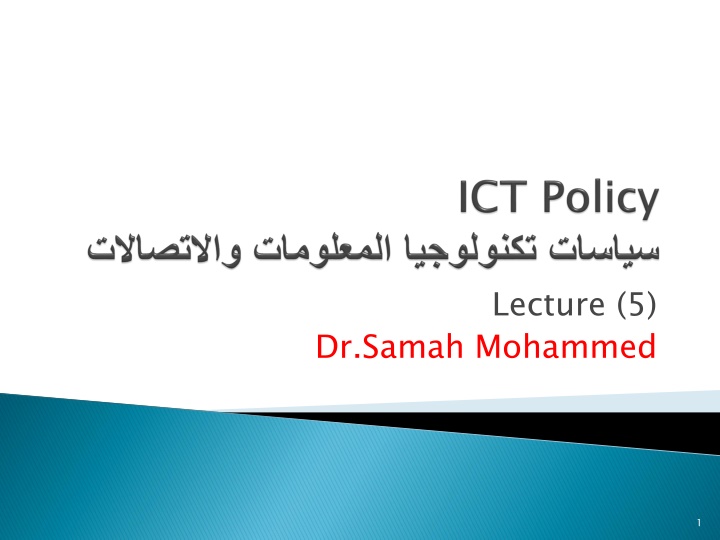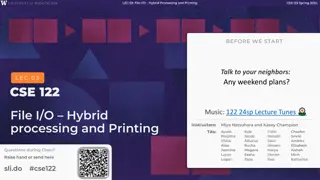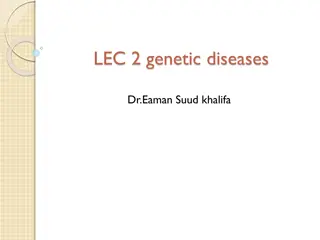
ITU - International Telecommunication Union: Development and Cooperation
Discover the International Telecommunication Union (ITU), a key intergovernmental organization facilitating collaboration between government and private sectors in the telecommunications industry. With a rich history of 137 years, ITU boasts 189 Member States, 650 Sector Members, and 750 staff from 71 nationalities. Explore ITU's mission, headquarters, regional and area offices, membership details, standard-setting activities, and more. Learn how ITU plays a pivotal role in shaping the future direction of international telecommunications through consensus-building and development projects.
Download Presentation

Please find below an Image/Link to download the presentation.
The content on the website is provided AS IS for your information and personal use only. It may not be sold, licensed, or shared on other websites without obtaining consent from the author. If you encounter any issues during the download, it is possible that the publisher has removed the file from their server.
You are allowed to download the files provided on this website for personal or commercial use, subject to the condition that they are used lawfully. All files are the property of their respective owners.
The content on the website is provided AS IS for your information and personal use only. It may not be sold, licensed, or shared on other websites without obtaining consent from the author.
E N D
Presentation Transcript
Lecture (5) Dr.Samah Mohammed 1
Intergovernmental Organization for development of telecommunications in which also non-governmental entities participate. 137 years old 189 Member States, 650 Sector Members 750 staff / 71 nationalities Website: http://www.itu.int 2
Founded on the principle of international cooperation between government and the private sector, The ITU is the global forum through which government and industry can work towards consensus on a wide range of issues affecting the future direction of this industry. ITU has adapted to the times and become more responsive to private companies. 3
Headquarters Regional offices Area offices Yaound Headquarters in Geneva with Liaison Office in New York Regional offices in Addis Ababa, Bangkok, Brasilia, Cairo Area offices in Bridgetown, Dakar, Harare, Jakarta, Moscow, Santiago, Tegucigalpa, 4
Companies both large and small can become members of ITU sectors by paying membership fees. companies provide much of the technical input to the decision-making process. Lower fees are available for membership in the Telecommunications Development Sector. 5
ITUs mission covers technical, developmental and policy issues . Much of its authority derives from its World Conferences, which review,and adopt the regulations that form the framework for the provision of international telecommunications services. Establishes the technical characteristics and operational procedures for wireless services. manages the global radio frequency spectrum. 6
coordinates international standard setting activities including standards for Internet Protocol (IP) networks and IP-based systems. Development Sector implements communications development projects that are funded by the UN and other sources. publishes definitive information on telecommunications trends. 7
Plenipotentiary Conferences, Council World Conferences on International Telecommunications. Three ITU Sectors. General Secretariat 8
Highest authority of ITU. Sets tasks, organization, plans, budget. Elects Council Member Countries Elects 5 high officials and 12 Radio Regulations Board (RRB) members. One country one voice. Consensus. Meets every 4 years 9
46 Member Countries. Oversees the ITU work between PPs. Meet every year 10
General Secretariat (SG) Radiocommunication Sector (ITU-R) Telecommunication Standardization Sector (ITU-T) Telecommunication Development Sector (ITU-D) 11
Tasks:- World Radiocommunication Conferences Radiocommunication Assemblies Study Groups Radio Regulations Board (RRB) Radiocommunication Advisory Group (RAG) Space services department Terrestrial services department Publications 12
Tasks :- Solve technical, operational and tariff questions with a view of standardizing all telecommunications (wired and wireless) on worldwide basis. Telecommunications Standardization Conferences and Study Groups 13
You couldnt make a telephone call from one side of the world to the other. You wouldn t be able to surf the Internet . Modern communications, as we know them, just wouldn t exist 14
Tasks:- To discharge the Union's dual responsibility as a UN specialized agency and executing agency for implementing projects under the UN development system or other funding arrangements. Development Conferences, Study Groups 15
The ITU Secretary-General is the legal representative of the Union. With the Coordination Committee and Secretariat, he coordinates the Union's activities and prepares policies and plans for the Union. Assisted in these duties by the Deputy Secretary- General, he is also responsible to the PP and Council for the administrative and financial issues. 16
WIPO is a specialized agency of the United Nations responsible for promoting the protection of intellectual property worldwide 179 countries are WIPO members; national and international non-governmental organisations may apply for observer status (www.wipo.org). The ICT revolution has probably had a greater impact on WIPO than on any other UN agency. 18
WIPO is responsible for administering 23 treaties( ) in the field of intellectual property. The treaties define internationally-agreed basic standards of protection in each country. WIPO faces large challenges in leading the way towards a system of intellectual property rights. 19



![Lec [2] Health promotion](/thumb/274962/lec-2-health-promotion-powerpoint-ppt-presentation.jpg)